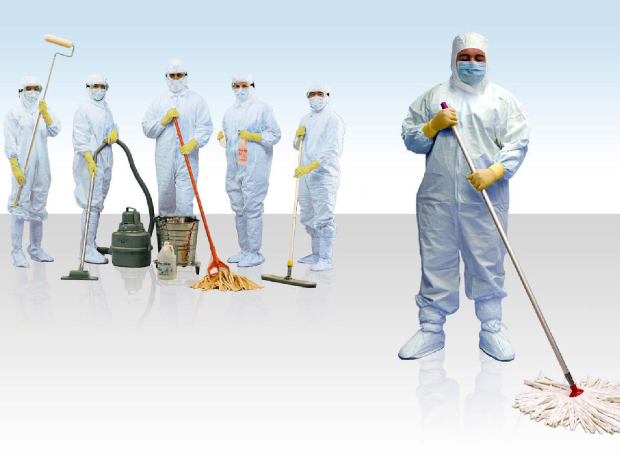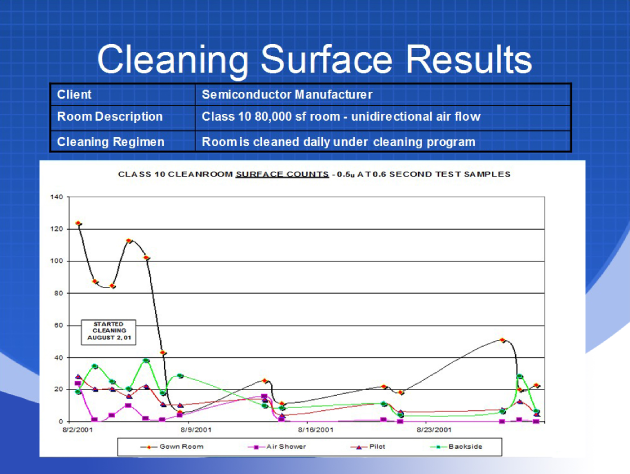Protoclean: Expert Cleanroom Cleaning Services
Cleaning
By using the PROTOCLEAN documented cleaning systems, you will see results of 2 to 10 times cleaner for particulate matter at the 0.5‑micron size and larger.
Continuous cleaning is performed in the cleanroom zones, interstitial, and sub-fab levels. The cleaning personnel are trained in this type of work and understand the different Protocol levels.
PROTOCLEAN has been and continues to perform testing cleanliness levels before and after cleaning by scientific methods since the company was founded. Over the years, PROTOCLEAN has accumulated hundreds of tests showing how our cleaning crew is performing and, more importantly, how much cleaner we get solid surfaces and air counts than our competitors before us.

Cleaning Verification
When it comes to non-viable particles, test methods are identified in ISO 14644-9– Classification of Surface Particle Cleanliness. There are different procedures for determining direct methods as opposed to in‑direct methods of surface contamination in a cleanroom. Among them are microbial monitoring, fall-out counts, UV light testing, scanning electron microscopes, witness plates, tape methods, and scanning camera surface particle detectors, to name a few, and Indirect Methods, such as flushing, which may not be as accurate.
For viable particles, microbial monitoring is an effective way to measure molds, bacteria, and yeasts on surfaces and air. Contact Plates and Bio‑Air Sampling units are used for sampling.
PROTOCLEAN uses the QIII surface particle detector counter to determine the number of particles on surfaces before cleaning start-up and after cleaning using PROTOCLEAN’s cleaning systems, the cumulative effects of cleaning using PROTOCLEAN’s cleaning systems, and surface count load between cleanings.
A meeting with the customer to come up with agreed-upon test locations and validated studies is the first step to using contamination mapping to develop a certified cleaning program.
In general, PROTOCLEAN and the customer will meet and set up a program that identifies count locations and which solid surfaces will be counted daily or more often, every other day, twice a week, and weekly, or any other agreed-upon time frame. Cleaning technicians clean according to the documented program listed on a cleaning log.
The data from the cleaning and testing is then logged into an Excel spreadsheet and may be used to determine cleaning frequencies.
Not all companies need to perform contamination mapping. PROTOCLEAN has performed its own contamination mapping, which has allowed PROTOCLEAN to put together a standard cleaning program that may be used at many customer locations.
Results
PROTOCLEAN has had such success with its cleaning systems. They are confident in reporting that by performing a superclean, construction clean, top-down, or triple clean, air particle counts will decrease anywhere from 2 to 10 times and microbial counts by 2 to 15 times.
In all the scientific testing below, PROTOCLEAN was hired to replace a competitor.

